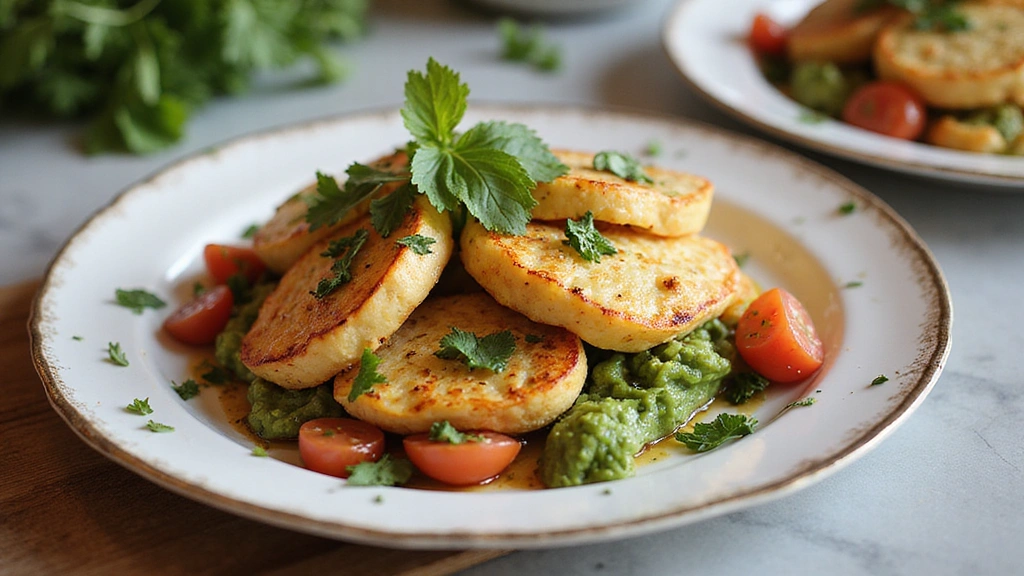Breakfast is often heralded as the most important meal of the day, and this Easy Mediterranean Diet Breakfast is no exception.
With its vibrant flavors and fresh ingredients, this dish encapsulates the essence of the Mediterranean lifestyle, emphasizing health and enjoyment.
Inspired by my travels along the sunny coasts of Greece, I’ve come to appreciate how important breakfast is in their culture—an opportunity to gather, share, and savor.
This recipe is perfect for anyone looking to start their day on a delicious note while adhering to a healthy and balanced diet.
The History and Cultural Significance
• Easy Mediterranean Diet Breakfast traces its origins to the Mediterranean region, where breakfast has long been a communal affair.
• The dish evolved over decades as culinary traditions blended, incorporating elements from various countries, creating a diverse and flavorful morning meal.
• In Mediterranean cultures, breakfast traditionally appears at family gatherings and celebrations, symbolizing hospitality and the joy of good food.
• While many variations exist across different regions, the authentic version maintains a balance of fresh vegetables, whole grains, and healthy fats that sets it apart from imitations.
Recipe Overview
Nutritional Information (per serving)
Ingredients
Essential Equipment Guide
Non-Stick Skillet: A non-stick skillet is essential for cooking eggs and vegetables without sticking. Look for one with a solid base for even heating and a durable coating that can withstand high temperatures.
Mixing Bowl: A mixing bowl is important for combining ingredients like eggs and seasonings smoothly. Choose a bowl that is large enough to prevent spills and easy to handle.
Sharp Knife: A sharp knife is crucial for chopping vegetables precisely. Ensure it has a comfortable grip and is well-balanced for safe and efficient chopping.
Preparation Methods
Whisking Eggs: Whisking eggs is key to achieving a fluffy texture. Use a fork or whisk to incorporate air until the mixture is slightly frothy, which helps the eggs rise while cooking.
Sautéing Vegetables: Sautéing ensures that vegetables are tender yet still vibrant. Use medium heat and stir frequently to avoid burning while allowing the flavors to meld.
Chopping Fresh Herbs: Chopping herbs finely releases their essential oils and flavors. Use a sharp knife and a rocking motion to achieve even pieces, enhancing the dish’s aromatic profile.
Step 1: Prepare Ingredients
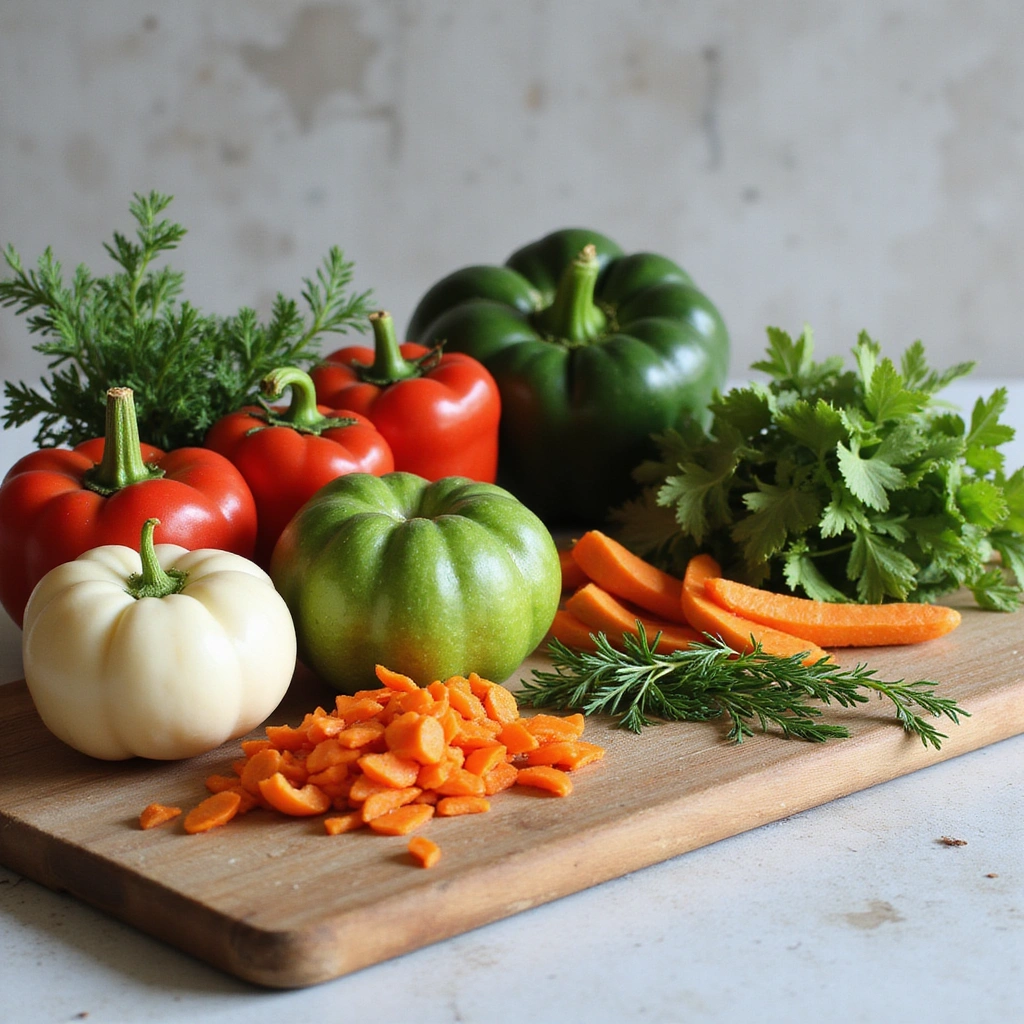
Start by gathering all ingredients on your countertop.
Wash and dry the cherry tomatoes, bell pepper, and parsley.
Chop the vegetables and herbs according to the ingredient list.
This step ensures everything is ready and makes cooking smoother.
Step 2: Whisk the Eggs
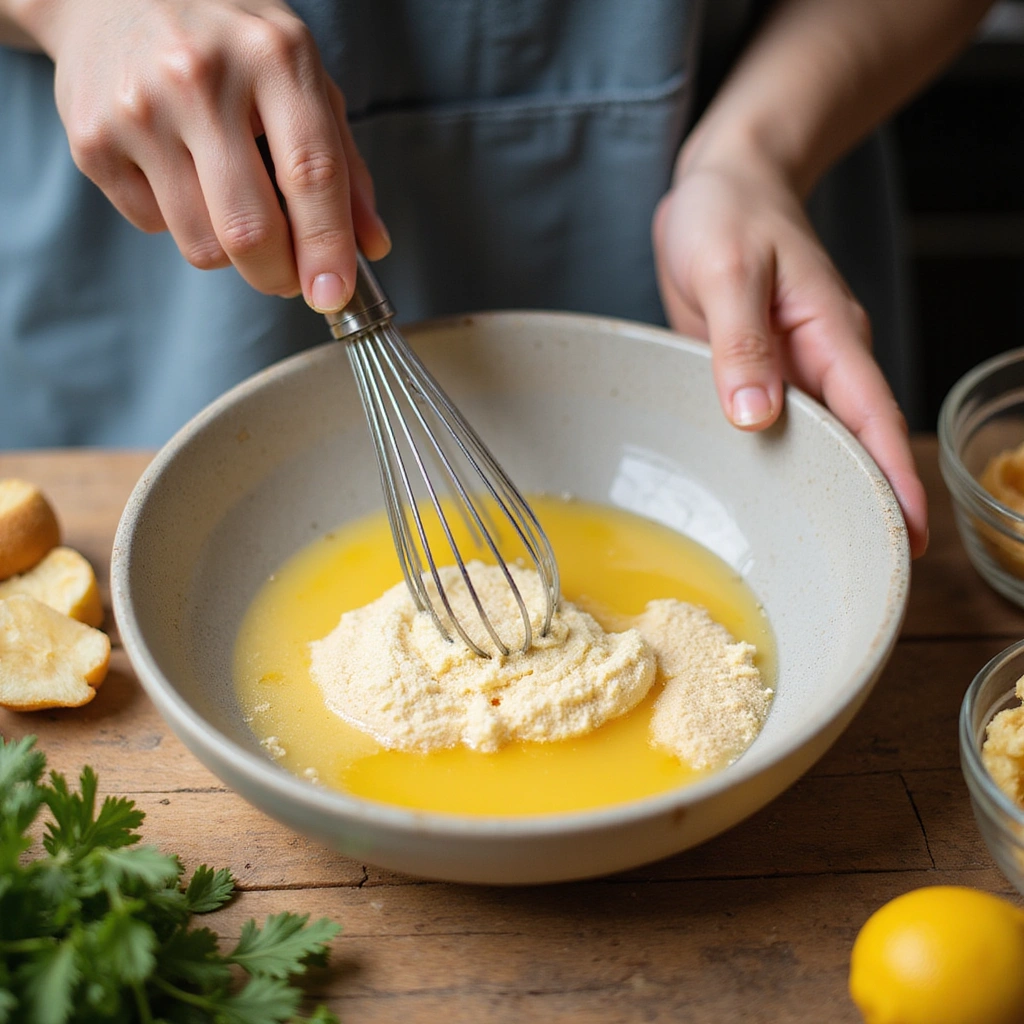
In a mixing bowl, crack the eggs and add salt and pepper.
Use a whisk to beat the eggs until they are frothy and well combined.
This aeration will help create a fluffy texture when cooked.
Ensure there are no visible egg whites remaining for even cooking.
Step 3: Sauté the Vegetables
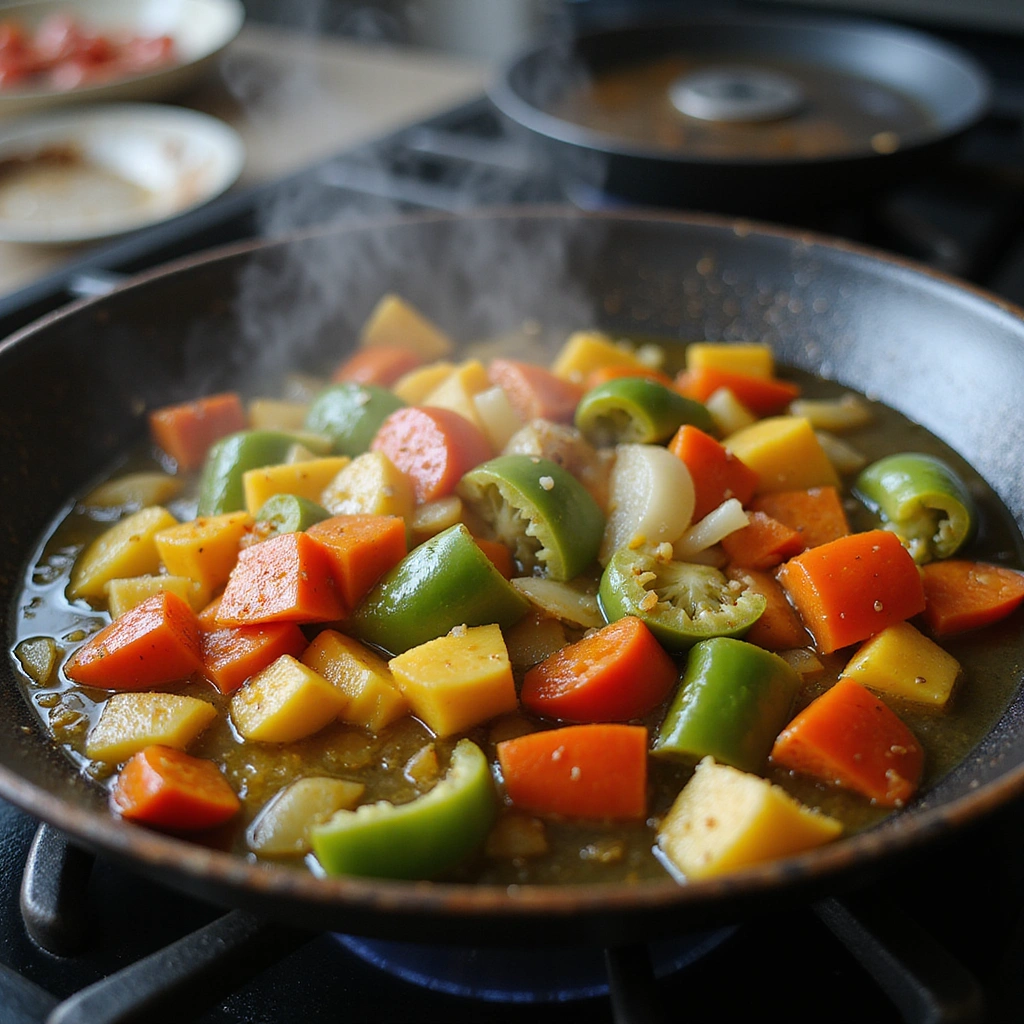
Heat a non-stick skillet over medium heat and add a splash of olive oil.
Once the oil is shimmering, add the chopped bell pepper and red onion.
Sauté for about 3-5 minutes until the vegetables are softened but still colorful.
Stir occasionally to prevent sticking and ensure even cooking.
Step 4: Add Tomatoes
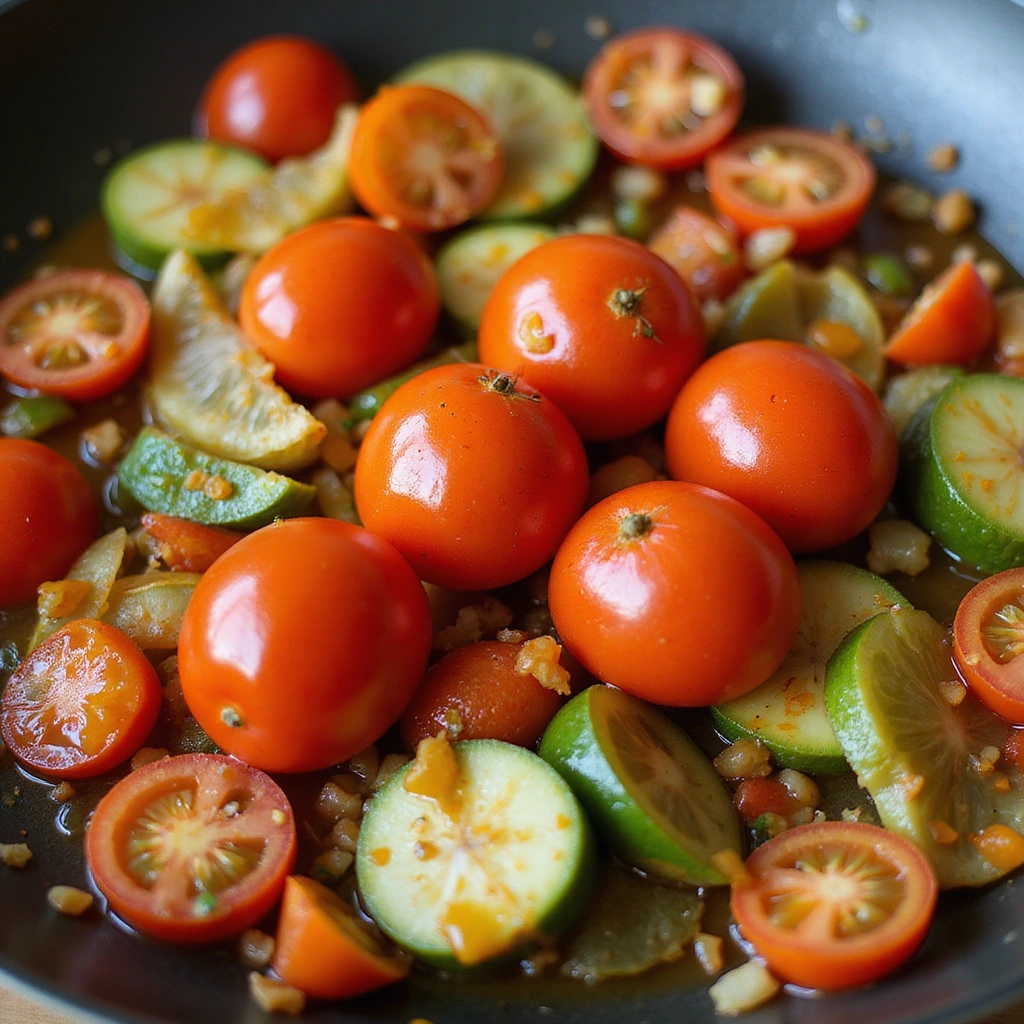
Once the onions are translucent, add the halved cherry tomatoes to the skillet.
Continue to sauté for another 2-3 minutes until the tomatoes start to soften.
This will enhance their sweetness and integrate them into the mixture.
Be careful not to overcook them, as you want them to retain some shape.
Step 5: Pour in Eggs
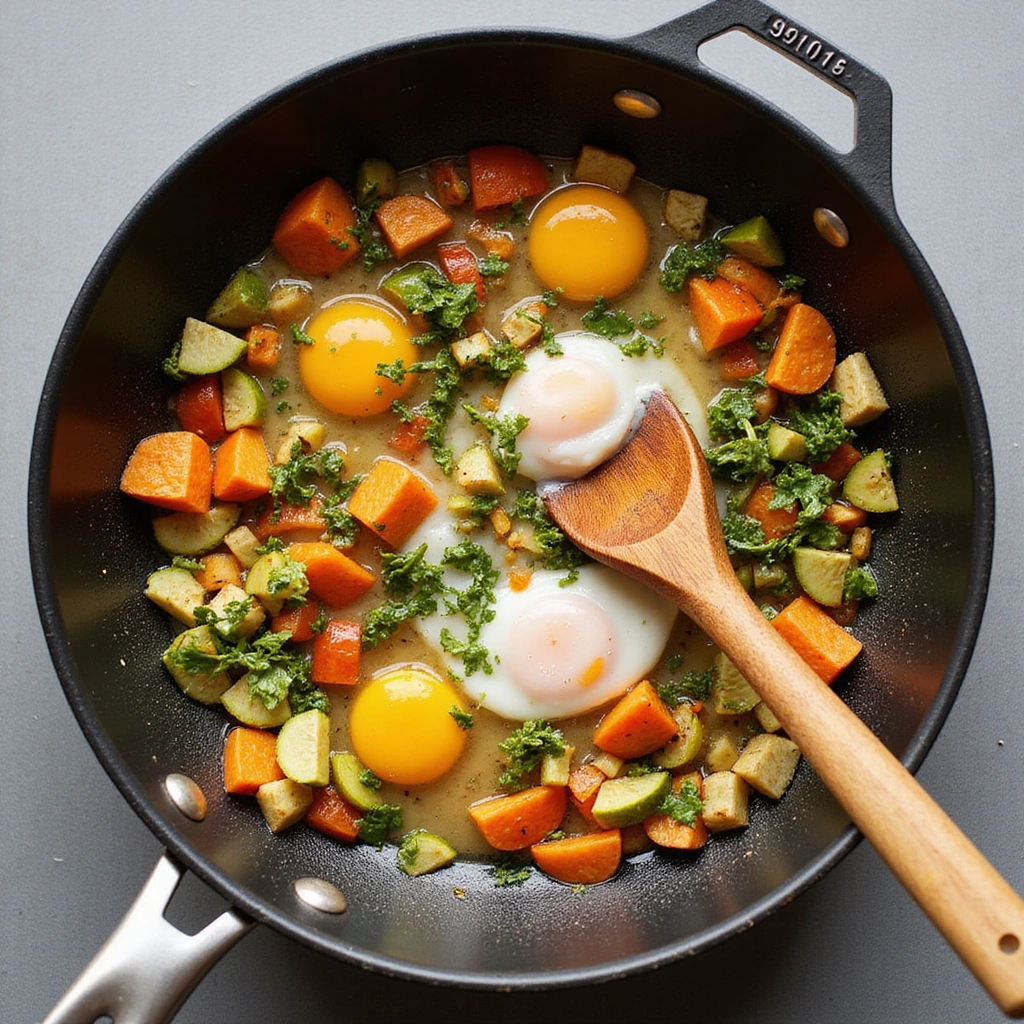
Reduce the heat to low and pour the whisked eggs over the sautéed vegetables.
Gently stir the mixture to distribute the eggs evenly without breaking the vegetables.
Cook for about 5-7 minutes until the eggs are set but still slightly runny on top.
This method allows for a creamy texture without overcooking the eggs.
Step 6: Add Fresh Herbs
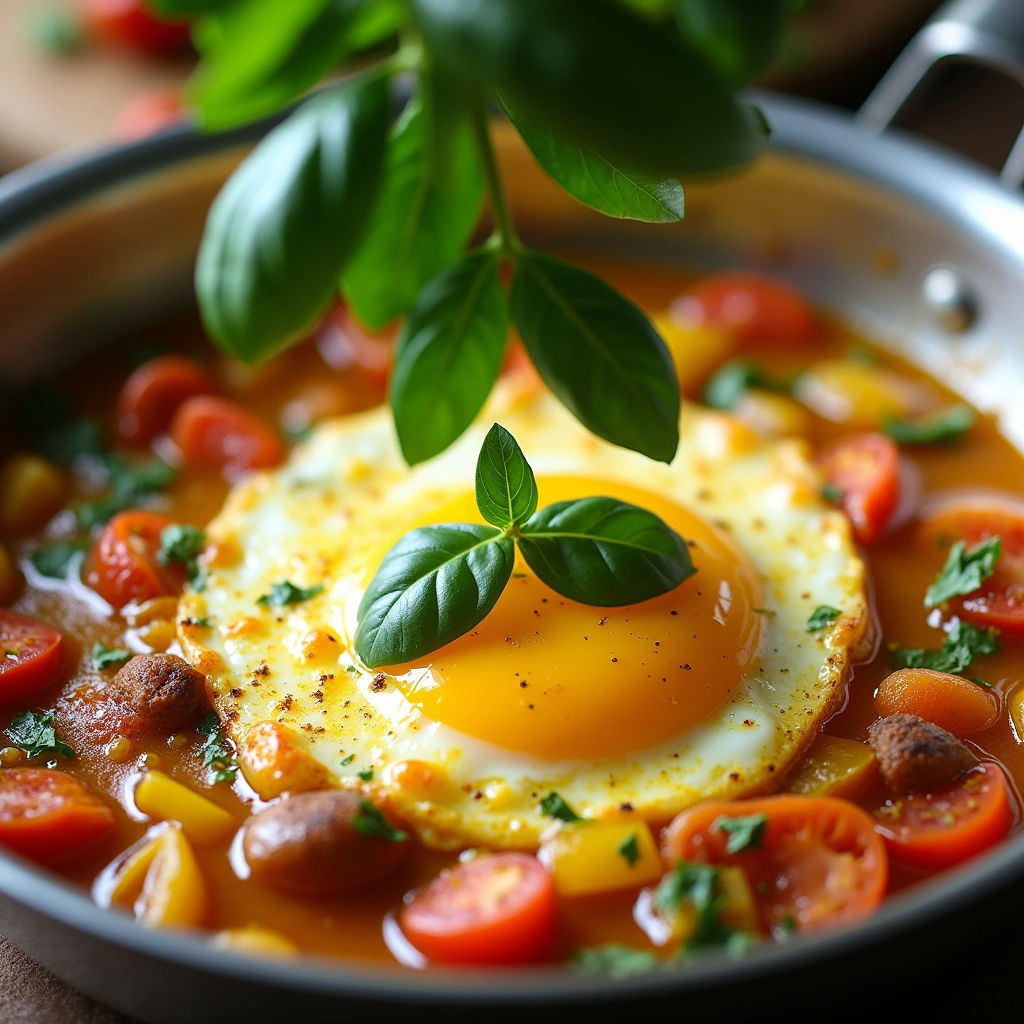
Once the eggs are mostly cooked, sprinkle the chopped basil over the top.
Gently fold the herbs into the egg mixture for added freshness.
This step adds a burst of flavor that elevates the dish.
Remove from heat once the eggs are just set.
Step 7: Serve

Use a spatula to gently transfer the egg mixture to plates.
Garnish with additional parsley for a fresh touch.
Serve warm alongside whole grain bread or a side of fruit.
Enjoy this nutritious start to your day!
Critical Timing and Temperature Guide
Sautéing Vegetables: Cook vegetables for about 5-7 minutes until they are tender but still colorful. Look for a slight browning on the edges. Avoid cooking too long to prevent mushiness.
Cooking Eggs: When cooking the eggs, keep the heat low to avoid toughening them. They should be set but still slightly runny on top. Remove from heat before they are fully cooked, as they will continue to cook off the heat.
Fresh Herbs: Add fresh herbs just before serving to maintain their vibrant flavor and color. Avoid cooking them for too long to preserve their freshness.
Pro Tips for Mediterranean Diet Recipes Breakfast Healthy & Fresh
• Ingredient Selection: Always choose the freshest vegetables and high-quality eggs to enhance flavor and nutrition.
• Preparation Secret: Let the eggs sit for a minute after whisking to help them incorporate more air, leading to fluffier results.
• Temperature Management: Use a medium heat to sauté vegetables and low heat for cooking eggs for optimal texture.
• Texture Enhancement: Stir gently while cooking eggs to keep them soft and avoid overcooking.
• Flavor Layering: Incorporating herbs at the end of cooking preserves their flavor and aroma, creating a fresher taste.
• Make-Ahead Strategies: Pre-chop vegetables the night before to save time during breakfast preparation.
• Restaurant-Quality Finishing Touches: Drizzle a little extra virgin olive oil before serving for a touch of richness.
• Equipment Optimization: Use a well-seasoned non-stick skillet to prevent sticking and make clean-up easier.
Troubleshooting Common Issues
• Eggs Too Dry: Overcooking is usually the culprit. Keep the heat low and remove from heat while still slightly runny to achieve creamy eggs.
• Vegetables Not Tender: If they are still crunchy, increase cooking time slightly and stir often to ensure even cooking.
• Flavors Unbalanced: Adjust seasoning with more salt or herbs. Taste as you go to ensure a balanced flavor profile.
• Eggs Not Setting: Ensure the heat is low enough. Covering the skillet briefly can help trap steam for cooking.
• Herbs Losing Flavor: Add herbs towards the end of cooking to keep their vibrant taste and aroma intact.
Variations and Regional Differences
• Spanish Tortilla: This variation includes potatoes and is thicker, often cooked in a round shape and served as tapas.
• Greek Frittata: Incorporates feta cheese and olives, providing a salty and savory twist, often baked instead of stove-cooked.
• Italian Omelette: Features ingredients like zucchini and artichokes, focusing on seasonal vegetables.
• Modern Interpretations: Some recipes may include quinoa or whole grains for added texture and nutrition.
Food Science Behind the Recipe
• Emulsification: The process of whisking eggs incorporates air, creating a lighter texture. Understanding this helps in achieving fluffier eggs.
• Maillard Reaction: Sautéing vegetables creates complex flavors through browning. This reaction enhances the dish’s overall taste.
• Coagulation: Eggs change from liquid to solid as they cook. Knowing the right temperature prevents overcooking and maintains creaminess.
Frequently Asked Questions
What’s the most common mistake people make when preparing Mediterranean Diet Breakfast? Overcooking the eggs is the most common mistake, leading to a rubbery texture. Use low heat and remove them from the heat while still slightly runny.
Can I prepare components of this dish in advance? Yes, you can chop vegetables ahead of time and store them in the fridge for up to 24 hours to save prep time in the morning.
How do I adapt this recipe for dietary restrictions? Substitute eggs with tofu scramble for a vegan option and use gluten-free bread if required.
What’s the best way to store and reheat leftovers? Store in an airtight container in the fridge for up to 3 days. Reheat gently in a skillet over low heat to maintain texture.
Can I freeze this dish? Yes, you can freeze the cooked mixture in an airtight container for up to a month. Thaw overnight in the fridge before reheating.
What wine or beverages pair best with this dish? A light white wine or herbal tea complements the freshness of the Mediterranean breakfast beautifully.
How can I scale this recipe up for a crowd? Simply multiply each ingredient by the number of servings desired and use a larger skillet or cook in batches.
What side dishes complement this recipe best? Fresh fruit, Greek yogurt, or whole grain bread are excellent accompaniments that enhance the meal.
How do professional chefs elevate this dish for restaurant service? Chefs often use high-quality extra virgin olive oil and finish with microgreens or edible flowers for visual appeal.
Serving and Presentation Guide
• Traditional Presentation: Serve in a shallow bowl with a sprinkle of fresh herbs on top. Accompany with whole grain bread on the side.
• Modern Plating Ideas: Use a large white plate and arrange the egg mixture artistically, drizzling extra virgin olive oil for a glossy finish.
• Accompaniment Suggestions: Pair with a side of Greek yogurt and fresh fruit for a balanced breakfast experience.
• Special Occasion Presentation: For gatherings, serve family-style in a large bowl, garnished with edible flowers for a festive touch.
Conclusion
This Easy Mediterranean Diet Breakfast is not just a meal; it’s a celebration of vibrant flavors and healthy choices.
I encourage you to try it and experience the delightful combination of fresh ingredients.
May it bring joy to your mornings and inspire a healthier lifestyle!
